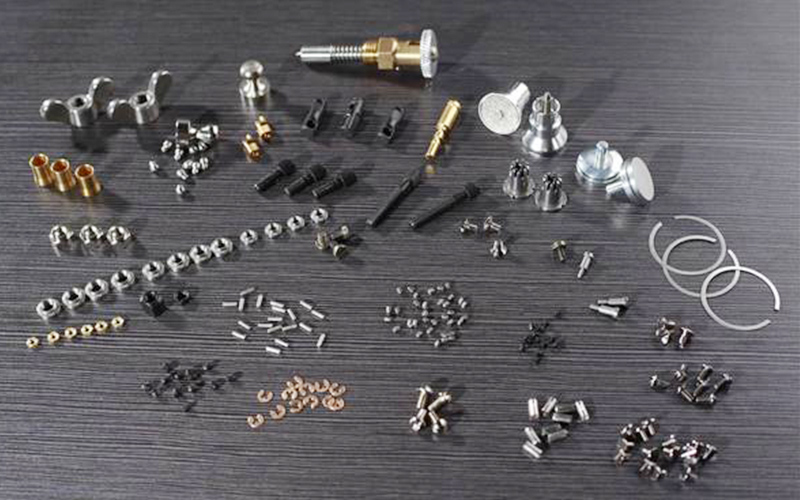The roughness of a part is a parameter to measure the surface roughness of a part. In precision machining, the friction and extrusion between the cutter and the surface of the part cause the surface roughness of the part. What factors are related to the roughness of the part in the precision machining.
(1) Geometric factors
From the geometric point of view, the shape and geometric angle of the tool, especially the radius of the tool tip arc, the main deflection angle, the secondary deflection angle and the feed rate in cutting parameters have a great influence on the surface roughness.
(2) Physical factors
Considering the physical essence of the cutting process, the metal material plastic deformation is caused by the corner of the cutting edge and the extrusion and friction behind the tool, which seriously worsens the surface roughness. When the plastic material is processed by numerical control lathe to form strip chip, it is easy to form chip accretion with high hardness on the rake face. It can replace the rake face and cutting edge for cutting, so that the geometric angle of the cutter and the back feed can be changed. The contour of the chip accretion is very irregular, so that the depth and width of the workpiece surface are constantly changing. Some chips are embedded in the surface of the workpiece, which increases the surface roughness. The vibration during cutting increases the surface roughness parameters.

(3) Technological factors
From the perspective of technology, the influence on the surface roughness of metal parts is mainly related to cutting tools, workpiece materials and CNC processing conditions.
With the development of the times, precision machining is becoming more and more important in people's life. What are the requirements of precision machining for materials? Let's learn about it with Xiaobian.
Precision machining, not all materials can be precision processed. Some materials are too hard and exceed the hardness of the processing machine parts, which may cause the machine parts to collapse. Therefore, these materials are not suitable for precision machining, unless they are parts made of special materials or laser cutting.
For precision machining materials are divided into two categories, metal materials and non-metallic materials.
For metal materials, the hardness of stainless steel is larger than that of cast iron.
The processing of ceramics and plastics belongs to the processing of non-metallic materials.
1. The first is the requirement of material hardness. For some occasions, the higher the material hardness, the better. It is only limited to the hardness requirements of processing machine parts. The processed materials cannot be too hard. If they are harder than the machine parts, they cannot be processed.
2. Secondly, the material should be soft and hard, which should be at least one grade lower than the hardness of the machine parts. At the same time, it also depends on the function of the processed devices, so as to select the reasonable materials for the parts.
Dalian Hanpu Jiangxin Precision Machinery Co., Ltd. is a comprehensive machinery processing and international trade enterprise mainly engaged in designing and manufacturing all kinds of fixtures, precision mechanical parts, machine parts and mold accessories. Welcome to inquire.


 Page location :
Page location : 

